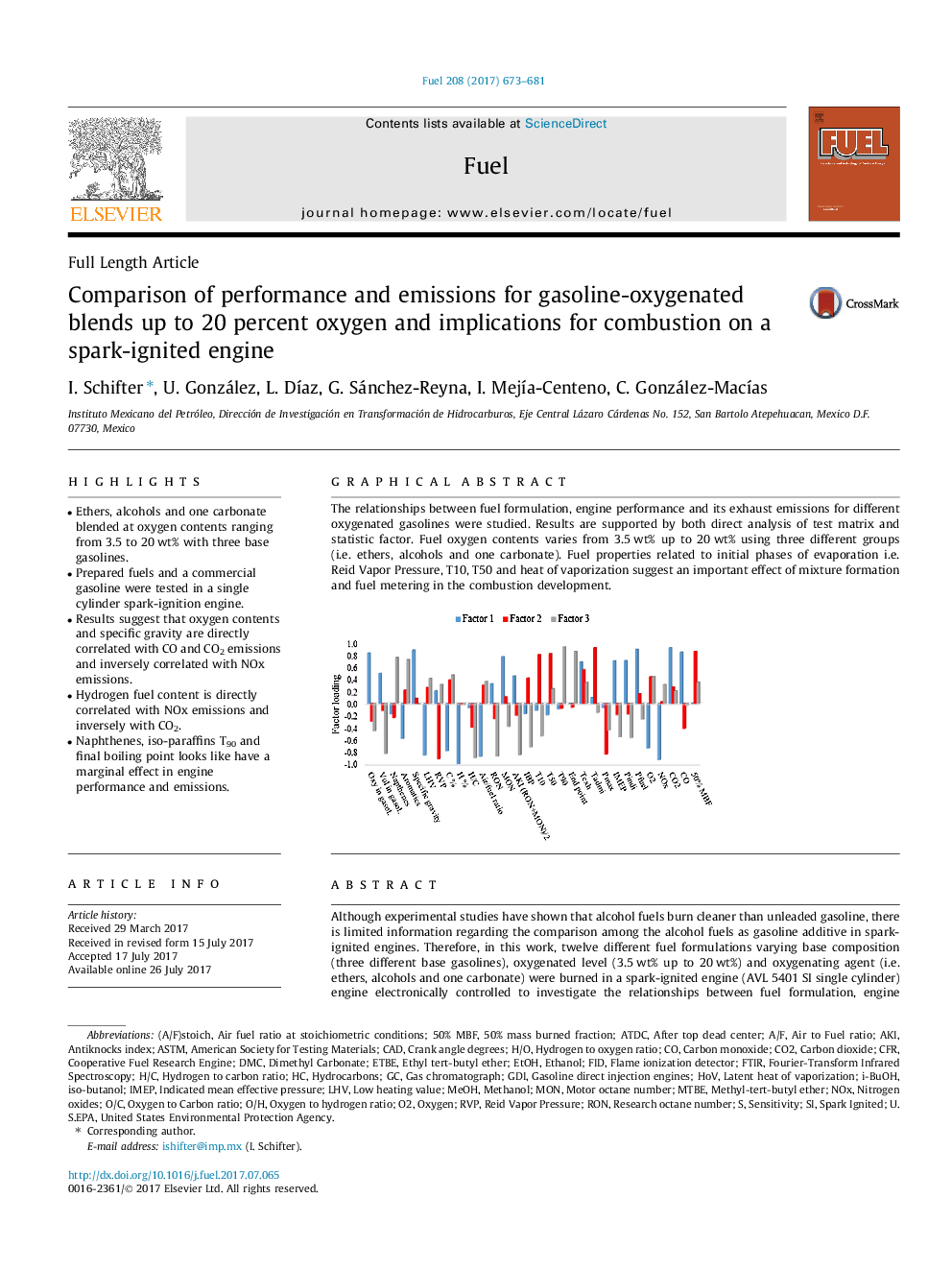| کد مقاله | کد نشریه | سال انتشار | مقاله انگلیسی | نسخه تمام متن |
|---|---|---|---|---|
| 6474223 | 1424956 | 2017 | 9 صفحه PDF | دانلود رایگان |
- Ethers, alcohols and one carbonate blended at oxygen contents ranging from 3.5 to 20Â wt% with three base gasolines.
- Prepared fuels and a commercial gasoline were tested in a single cylinder spark-ignition engine.
- Results suggest that oxygen contents and specific gravity are directly correlated with CO and CO2 emissions and inversely correlated with NOx emissions.
- Hydrogen fuel content is directly correlated with NOx emissions and inversely with CO2.
- Naphthenes, iso-paraffins T90 and final boiling point looks like have a marginal effect in engine performance and emissions.
Although experimental studies have shown that alcohol fuels burn cleaner than unleaded gasoline, there is limited information regarding the comparison among the alcohol fuels as gasoline additive in spark-ignited engines. Therefore, in this work, twelve different fuel formulations varying base composition (three different base gasolines), oxygenated level (3.5Â wt% up to 20Â wt%) and oxygenating agent (i.e. ethers, alcohols and one carbonate) were burned in a spark-ignited engine (AVL 5401 SI single cylinder) engine electronically controlled to investigate the relationships between fuel formulation, engine performance and exhaust emissions at constant spark advance (without combustion phasing optimization). Fuel properties related to initial phases of evaporation i.e. Reid Vapor Pressure, T10, T50, and heat of vaporization suggested an important effects of mixture formation and fuel metering in the combustion development. Experimental results were supported by both direct analysis of test matrix and statistical analysis. Moreover, results indicated that oxygen content and specific gravity were directly associated with CO and CO2 emissions, and inversely associated with NOx emissions. Hydrogen fuel content was directly associated with NOx emissions and inversely with CO2. Naphthenes, iso-paraffins, T90, and final boiling point showed marginal effect on engine performance and emissions.
The relationships between fuel formulation, engine performance and its exhaust emissions for different oxygenated gasolines were studied. Results are supported by both direct analysis of test matrix and statistic factor. Fuel oxygen contents varies from 3.5Â wt% up to 20Â wt% using three different groups (i.e. ethers, alcohols and one carbonate). Fuel properties related to initial phases of evaporation i.e. Reid Vapor Pressure, T10, T50 and heat of vaporization suggest an important effect of mixture formation and fuel metering in the combustion development.64
Journal: Fuel - Volume 208, 15 November 2017, Pages 673-681
